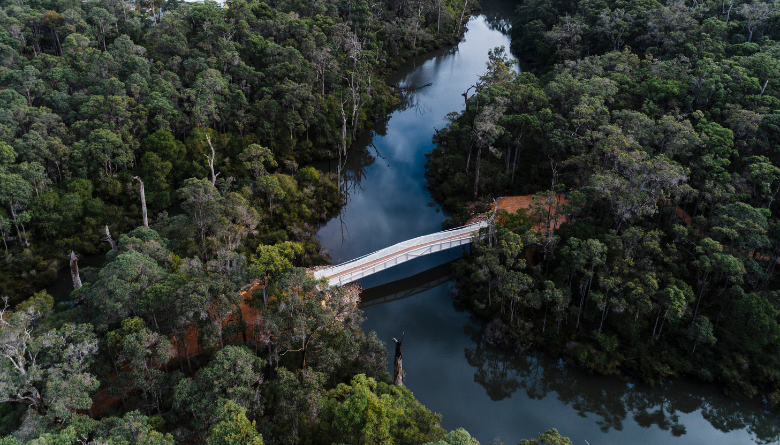
Did you know that every Summer, Shire Health Officers work with the WA Department of Health to keep an eye on the safety of our favourite swimming spots?
From November to May, we regularly sample water quality at popular swimming locations, including:
- Hardy Inlet (Turners Caravan Park & Colourpatch Cafe)
- Gnarabup Beach
- Gracetown Beach
- Gas Bay
- Flinders Bay
- Barrett Street Weir
- Rendall Close Weir
- Margaret River Rivermouth & canoe landing
- Blackwood River (Alexandra Bridge campground)
If the team find that the water isn't safe, warning signs will go up and stay in place until conditions improve. If you see the signs, please take care and follow the advice so we can keep you and your family safe!
While we are busy testing these waters, it's also important that you are aware of the health risks of swimming in waters over the summer period as they can be polluted with bacteria or algae.
Here are 8 tips to keep you safe when swimming in rivers, dams, or creeks:
- Avoid swimming after heavy rainfall (more than 10mm) as run-off from streets, gardens and farms into our oceans and rivers can increase harmful bacteria levels. As a precaution you should avoid swimming within 1 day after heavy rainfall in coastal waters and within 3 days after heavy rainfall in rivers, lakes, dams, or estuarine systems.
- Don't swim in water that looks discoloured, murky or smells unpleasant. This is a clear sign that the water may not be safe to swim in.
- Avoid swallowing water or putting your head under if you are unsure about its quality. If you swallow water that is polluted with bacteria or algae, you increase your risk of getting ill.
- Don't swim if you have cuts, grazes, or open wounds as you may risk further infection to your wound.
- Use proper toilet facilities when you are swimming. Young children need to be taken on regular toilet breaks so they don't use natural waters as a toilet.
- Wash thoroughly after swimming, especially before eating.
- Make sure animals don't drink untreated surface water.
- Avoid swimming in warm, slow moving, stagnant water or next to storm water drains. These conditions can promote the growth of algal blooms and amoebic meningitis. Storm water runoff is one of the most common causes of water pollution.
And last but not least, look for posted warning signs and please follow the advice on them. Happy swimming!

